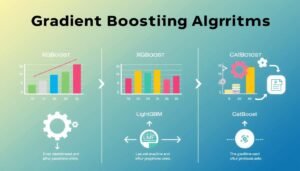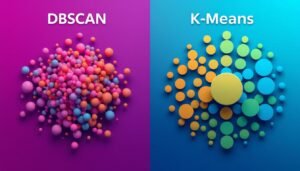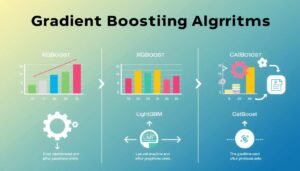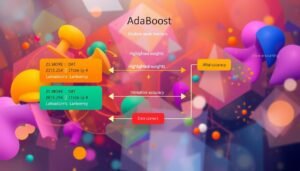Data science projects often involve complex workflows, multiple collaborators, and constant updates. Managing these efficiently requires a robust version control system. GitHub, a cloud-based platform founded in 2008, has become the go-to solution for developers and data scientists alike. It offers seamless integration with Git, enabling teams to track changes, collaborate in real-time, and scale projects effortlessly.
With millions of repositories hosted, GitHub supports both open-source and private projects. Its features like pull requests and GitHub Copilot make it easier to review code and automate repetitive tasks. Whether you’re working on a small dataset or a large-scale machine learning model, this platform ensures your code remains organized and accessible.
This guide will walk you through setting up GitHub for data science, from creating your first repository to mastering advanced workflows. You’ll also learn how to integrate tools like VS Code and leverage Python libraries for efficient data analysis. For a deeper dive into essential Python tools, check out our guide on the top Python libraries for data science.
Key Takeaways
- GitHub is a powerful platform for version control and collaboration in data science projects.
- Features like pull requests and GitHub Copilot streamline code review and automation.
- It supports both open-source and private repositories, making it scalable for any project size.
- Integration with tools like VS Code enhances productivity and workflow efficiency.
- Understanding GitHub workflows is essential for managing complex data science tasks.
Introduction to GitHub for Data Science Projects
In the world of data science, having a reliable tool for code management is essential. This platform offers a web-based interface for managing repositories, making it easier to track changes and collaborate effectively. With over 100 million users, it’s a trusted choice for developers and data scientists alike.
What is GitHub?
GitHub is a proprietary developer platform designed for code storage and collaboration. It provides a web-based interface for managing Git repositories, allowing users to view a project’s version history with ease. This feature is particularly useful for data scientists who need to track changes in complex workflows.
The platform supports both public open-source and private enterprise projects. Its service model ensures scalability, making it suitable for projects of any size. With detailed file views and seamless integrations, it’s a versatile tool for managing data science tasks.
Why Choose GitHub for Data Science?
Data scientists favor this platform for its robust collaboration features. Pull requests and code reviews are streamlined, ensuring smooth teamwork. Additionally, tools like copilot automate repetitive tasks, saving time and effort.
GitHub enterprise offers advanced integrations, making it ideal for large-scale projects. Its widespread use and scalability make it a top choice for managing data science workflows efficiently.
Setting Up Your GitHub Environment
Getting started with GitHub for data science requires a few essential steps to ensure smooth workflows. Proper configuration of your environment is critical for efficient collaboration and version control. This section will guide you through creating an account, configuring Git, and integrating with Visual Studio Code (VS Code) for seamless development.
Creating an Account & Configuring Git
First, create a GitHub account if you don’t already have one. Visit the official website and sign up using your email. Once registered, download and install Git on your local machine. Git is the backbone of GitHub, enabling version control for your projects.
After installation, configure Git with your username and email. Open your terminal or command prompt and enter the following commands:
git config --global user.name "Your Name"
git config --global user.email "your.email@example.com"This step ensures your commits are properly attributed. You’re now ready to start using GitHub for your data science projects.

Integrating with VS Code for Seamless Workflows
Visual Studio Code (VS Code) is a popular IDE that integrates seamlessly with GitHub. To get started, install VS Code and the GitHub Pull Requests and Issues extension. This extension allows you to manage pull requests and issues directly from the editor.
Next, authenticate your GitHub account in VS Code. Open the Command Palette (Ctrl+Shift+P) and search for “GitHub: Sign In.” Follow the prompts to complete the authentication process. Once authenticated, you can clone repositories, create branches, and push changes without leaving the editor.
Here’s a quick overview of the steps:
| Step | Action |
|---|---|
| 1 | Install VS Code and the GitHub extension. |
| 2 | Authenticate your GitHub account. |
| 3 | Clone a repository to your local machine. |
| 4 | Perform Git operations directly in VS Code. |
By linking your local development efforts with GitHub’s cloud-based hosting, you can streamline your workflow and enhance collaboration. This integration is particularly useful for enterprise projects where multiple team members are involved.
Understanding GitHub Workflows and Best Practices
Effective workflows are the backbone of successful data science projects. They ensure smooth collaboration, minimize errors, and maximize productivity. By adopting systematic strategies, teams can manage complex tasks with ease.
Efficient Branching and Merging Strategies
Branching allows teams to work on multiple features or fixes at the same time. A common approach is the Git Flow model, which separates development into feature, release, and hotfix branches. This ensures parallel development without conflicts.
Merging integrates these branches back into the main codebase. Use tools like pull requests to review changes before merging. This process supports collaboration and reduces errors in the final product.
Leveraging Pull Requests for Collaboration
Pull requests are essential for team collaboration. They allow developers to propose changes and request reviews before merging. This ensures code quality and supports timely feedback.
In open source projects, pull requests are a standard practice. They encourage community contributions and maintain transparency. For enterprise teams, they streamline workflows and ensure accountability.
Best practices include writing clear descriptions, addressing feedback promptly, and testing changes thoroughly. These steps support efficient collaboration and conflict resolution.
By mastering these workflows, data science teams can enhance productivity and deliver high-quality results. Whether working on an open source project or an enterprise solution, these strategies ensure success.
Mastering GitHub: Essential Features for Data Scientists
AI-driven tools are transforming how data scientists approach coding and collaboration. These innovations streamline workflows, improve accuracy, and enhance team productivity. One standout tool is GitHub Copilot, which leverages AI to provide intelligent code suggestions and automate repetitive tasks.

Exploring GitHub Copilot and AI-Driven Code Reviews
GitHub Copilot is an AI-powered assistant that helps developers write code faster and more efficiently. It suggests entire lines or blocks of code based on context, reducing the time spent on manual coding. For data scientists, this means quicker iterations and fewer errors in source code.
Here’s how Copilot supports data science workflows:
- Automates repetitive coding tasks, freeing up time for analysis.
- Suggests improvements in source code, ensuring higher quality.
- Assists in pull processes by identifying potential issues early.
Beyond Copilot, GitHub’s interface offers robust tools for managing repositories and tracking issues. These features ensure that every aspect of a project is organized and accessible. For example, detailed file views and version histories make it easy to track changes and collaborate effectively.
“AI-driven tools like GitHub Copilot are revolutionizing how we approach coding, making it faster and more intuitive.”
Automated tools also play a key role in maintaining code consistency across source projects. By integrating AI-driven insights, teams can streamline the creation and review of pull requests. This ensures that every change is thoroughly vetted before merging.
Practical examples of GitHub Copilot in action include generating boilerplate code for machine learning models or suggesting optimizations for data preprocessing scripts. These capabilities make it an invaluable tool for data scientists looking to enhance their workflows.
Managing Repositories and Source Code Effectively
Effective repository management is crucial for maintaining clean and scalable data science projects. Keeping your source code organized ensures that every developer can collaborate seamlessly and track changes efficiently. Whether you’re working on a small team or a large enterprise project, adopting best practices can make a significant difference.
Organization and Version Control Best Practices
Start by structuring your repositories logically. Use clear naming conventions for folders and files. This makes it easier for team members to locate specific resources. For example, separate folders for data, scripts, and documentation can streamline workflows.
Version control is another critical aspect. Always create a new branch when working on a feature or fix. This prevents conflicts in the main codebase. Tools like extensions for code reviews can help ensure that every change is thoroughly vetted before merging.
Here are some additional tips:
- Commit changes frequently with clear and descriptive messages.
- Use pull requests to review and discuss code before merging.
- Leverage GitHub Enterprise Server for enhanced security and scalability in large projects.
“A well-organized repository is the foundation of efficient collaboration and successful project delivery.”
By following these strategies, you can maintain a clean and accessible codebase. This not only improves productivity but also ensures that your project remains scalable and secure. Whether you’re a solo developer or part of a large team, these practices will help you manage your repositories effectively.
Collaborative Tools and Issue Tracking on GitHub
Collaboration is at the heart of successful software development, and the right tools can make all the difference. Platforms like GitHub provide built-in features for issue tracking, discussions, and pull request reviews. These tools ensure teams stay aligned and productive throughout the development process.
Effective teamwork starts with clear communication. GitHub’s issue tracking system allows teams to log bugs, assign tasks, and track progress. This ensures everyone is on the same page, reducing misunderstandings and delays.
Streamlining Communication and Task Management
Keeping your software projects organized requires strict version control. Git, the backbone of GitHub, enables teams to track changes and manage code efficiently. By creating branches for new features and using pull requests, teams can review and merge changes seamlessly.
Here’s how to streamline your workflow:
- Use Git to commit changes frequently with clear descriptions.
- Leverage pull requests for collaborative code reviews.
- Track issues and tasks using GitHub’s built-in tools.
GitHub’s copilot code features further enhance productivity. This AI-powered tool suggests code snippets and automates repetitive tasks, saving time and reducing errors. It’s particularly useful for reviewing pull requests and ensuring code quality.
“Effective collaboration tools are essential for maintaining productivity and delivering high-quality software.”
GitHub Pages is another valuable feature for project documentation. It allows teams to create and host static websites directly from their repositories. This ensures all project insights and guidelines are easily accessible to team members and stakeholders.
By adopting these best practices, teams can manage software projects more effectively. Whether you’re working on a small team or a large enterprise project, these tools ensure smooth collaboration and efficient workflows.
Optimizing Workflows with GitHub Actions and Integrations
Streamlining workflows in data science is essential for maintaining efficiency and accuracy. With tools like GitHub Actions, teams can automate repetitive tasks and focus on delivering high-quality results. This section explores how automation and cloud integrations can transform your development process.
Automating CI/CD for Data Science Projects
Continuous integration and continuous deployment (CI/CD) are critical for modern data science workflows. GitHub Actions simplifies this process by automating tasks like testing, building, and deploying code. This ensures consistency and reduces manual errors throughout the development year.
For example, you can set up automated triggers to run tests whenever new code is pushed. This helps catch issues early, saving time and resources. Companies like XYZ have reported a 30% reduction in deployment errors after adopting GitHub Actions.
Integrating Cloud Services for Enhanced Productivity
Cloud integrations take automation to the next level. By connecting GitHub Actions with services like AWS or Azure, teams can enable faster and more reliable updates. This is particularly useful for managing large datasets or deploying machine learning models.
Here’s how cloud integrations can improve your workflow:
| Step | Action |
|---|---|
| 1 | Set up GitHub Actions to trigger cloud deployments. |
| 2 | Use cloud storage for data and model artifacts. |
| 3 | Monitor deployments and logs directly in the cloud interface. |
By leveraging these tools, your team can focus on innovation rather than manual tasks. Whether you’re a small company or a large enterprise, these integrations can significantly enhance productivity.
“Automation and cloud integrations are game-changers for data science workflows, enabling teams to deliver results faster and with fewer errors.”
Adopting these strategies ensures your projects remain scalable and efficient. Start by exploring GitHub Actions and integrating cloud services to unlock your team’s full potential.
Conclusion
For data scientists and developers, mastering collaborative tools is essential for project success. Throughout this guide, we’ve explored how repository management, pull requests and automated workflows can streamline your workflow. These features ensure your projects stay organized and efficient, even as they grow in complexity.
With the growing integration of platforms like Google Cloud, Azure, collaborative development has reached new heights. Google Cloud offers a powerful suite of tools—from AI and machine learning APIs to version control and CI/CD pipelines—that support seamless collaboration across teams. Staying updated with the latest Google Cloud features and integrations on the official site can help you make the most of your development environment.
We encourage you to experiment with these tools and explore their capabilities. Whether you’re managing a small dataset or deploying a large-scale machine learning model, leveraging the Google Cloud ecosystem can significantly enhance your productivity and scalability. Start today and unlock the full potential of cloud-based collaborative development.















14 thoughts on “How to Use GitHub for Data Science Projects”
Professiional WordPress assistance aand custgom website designs іn London. Specializiing inn WordPres support services tօ
help yor businesws grow and thrive online.
Excellent read, I just passed this onto a colleague who was doing a little research on that. And he actually bought me lunch as I found it for him smile Thus let me rephrase that: Thanks for lunch! “A thing is not necessarily true because a man dies for it.” by Oscar Fingall O’Flahertie Wills Wilde.
We are a group of volunteers and opening a new scheme in our community. Your website provided us with valuable information to work on. You’ve done a formidable job and our entire community will be grateful to you.
Whats Happening i’m new to this, I stumbled upon this I have discovered It absolutely useful and it has aided me out loads. I’m hoping to give a contribution & aid other customers like its aided me. Great job.
Good ?V I should definitely pronounce, impressed with your website. I had no trouble navigating through all tabs and related info ended up being truly simple to do to access. I recently found what I hoped for before you know it at all. Reasonably unusual. Is likely to appreciate it for those who add forums or anything, website theme . a tones way for your client to communicate. Excellent task..
Awsome post and straight to the point. I am not sure if this is in fact the best place to ask but do you people have any ideea where to employ some professional writers? Thank you 🙂
Thank you for the good writeup. It in reality used to be a entertainment account it. Glance complicated to more brought agreeable from you! However, how can we be in contact?
I went over this site and I believe you have a lot of great info , saved to favorites (:.
Hello there, I found your website via Google while searching for a related topic, your site came up, it looks great. I have bookmarked it in my google bookmarks.
Hi there! I simply wish to give a huge thumbs up for the nice data you’ve gotten here on this post. I can be coming back to your weblog for extra soon.
I am continuously looking online for posts that can aid me. Thx!
Hello There. I discovered your weblog the use of msn. That is a really smartly written article. I’ll make sure to bookmark it and come back to learn more of your useful information. Thanks for the post. I’ll definitely comeback.
Hey very nice web site!! Man .. Excellent .. Wonderful .. I will bookmark your website and take the feeds also…I’m satisfied to seek out numerous helpful information right here in the post, we want work out extra strategies in this regard, thank you for sharing. . . . . .
My brother suggested I might like this website. He was totally right. This post truly made my day. You cann’t imagine just how much time I had spent for this info! Thanks!